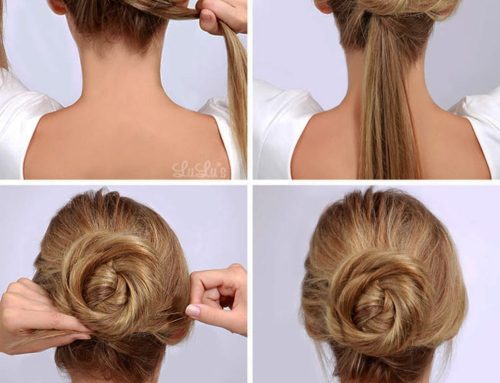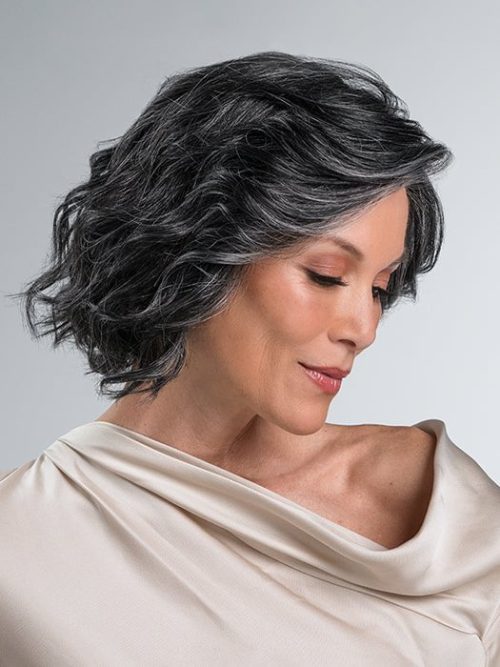How Long Must Your Hair Be to Braid? The Ultimate Guide You Didn’t Know You Needed
Hey there! If you’ve ever wondered, “How long does my hair need to be to braid?” you’re not alone. Braiding is one of those timeless hairstyles that’s both practical and super cool, but figuring out the perfect hair length can feel like a mystery. Whether you’re dreaming of tight cornrows, flowy French braids, or chunky box braids, the length of your hair plays a huge role. But here’s the kicker—it’s not just about inches! There’s a whole world of secrets, tricks, and fun facts behind braiding that most people don’t talk about.
In this guide, we’re diving deep into everything you need to know about hair length for braiding. We’ll cover the minimum lengths for different styles, spill some insider tips (like how your hair type changes the game), and even share the latest research on how braiding can affect your hair health. Plus, we’ll throw in some practical advice to help you nail that braid—whether your hair’s barely long enough or flowing down your back. Ready? Let’s get started!
Why Hair Length Matters for Braiding
Let’s kick things off with the big question: why does hair length even matter? Imagine trying to tie a tiny piece of string into a knot—it’s tricky, right? Braiding works the same way. You need enough hair to grab, twist, and weave together. Too short, and it’s like trying to build a sandcastle with dry sand—it just falls apart.
But here’s something cool: the “perfect” length depends on the braid style, your hair texture, and even how skilled you (or your stylist) are. For example, cornrows can work on super short hair, while a fishtail braid needs more length to shine. So, before we jump into the nitty-gritty, let’s set the stage: hair length isn’t just a number—it’s the key to unlocking your braid potential.
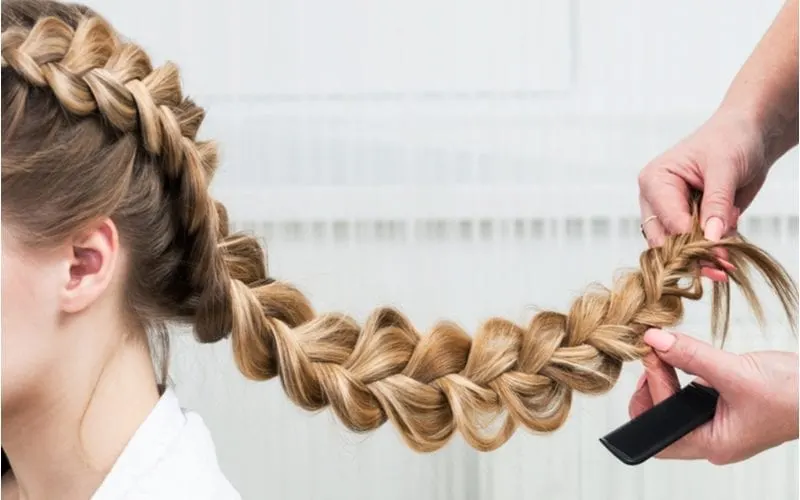
The Minimum Hair Length for Braiding: What’s the Magic Number?
Okay, let’s get to the good stuff. How short can your hair be and still braid? Here’s the baseline: 2 inches. That’s the absolute minimum most stylists agree on. Why? Because at 2 inches, you’ve got just enough hair to split into sections and weave together without it slipping out.
But hold up—2 inches isn’t the same for everyone. Straight hair might be a nightmare to braid at that length because it’s slippery, while coily or curly hair grips better and can handle braids even shorter. Let’s break it down by style so you can see what works for you.
Basic Three-Strand Braid
- Minimum Length: 2-3 inches
- Why It Works: This is the classic braid you learned as a kid—left over middle, right over middle, repeat. At 2 inches, it’s tough but doable if you’ve got patience and some gel to keep it in place. At 3 inches, it’s way easier to control.
- Pro Tip: Wet your hair first—it’s less slippery and holds the braid better.
Cornrows
- Minimum Length: 1.5-2 inches
- Why It Works: Cornrows are braided tight to the scalp, so they don’t need as much length to stay secure. If your hair’s coily, you might even pull it off at 1 inch with a skilled hand!
- Fun Fact: In some African cultures, cornrows have been rocked on short hair for centuries—think of them as the OG short-hair braid.
Box Braids
- Minimum Length: 2-4 inches
- Why It Works: Box braids usually use extensions, so 2 inches gives enough natural hair to anchor them. At 4 inches, you can skip extensions and braid your own hair for a lighter vibe.
- Secret Hack: Add a little texture spray to short hair—it gives extra grip for attaching extensions.
French or Dutch Braids
- Minimum Length: 5-8 inches
- Why It Works: These styles start at the scalp and pull in more hair as you go, so you need length to make them look full and flowy. At 5 inches, it’s a mini version; at 8 inches, you’re in pro territory.
- Did You Know? French braids were originally called “Grecian braids” in the 1800s—fancy, huh?
Fishtail Braid
- Minimum Length: 6-8 inches
- Why It Works: Fishtails split your hair into two sections and weave tiny pieces back and forth. Shorter than 6 inches, and it’s too hard to see the pattern.
- Cool Twist: This braid looks like a mermaid tail—perfect for anyone obsessed with ocean vibes!
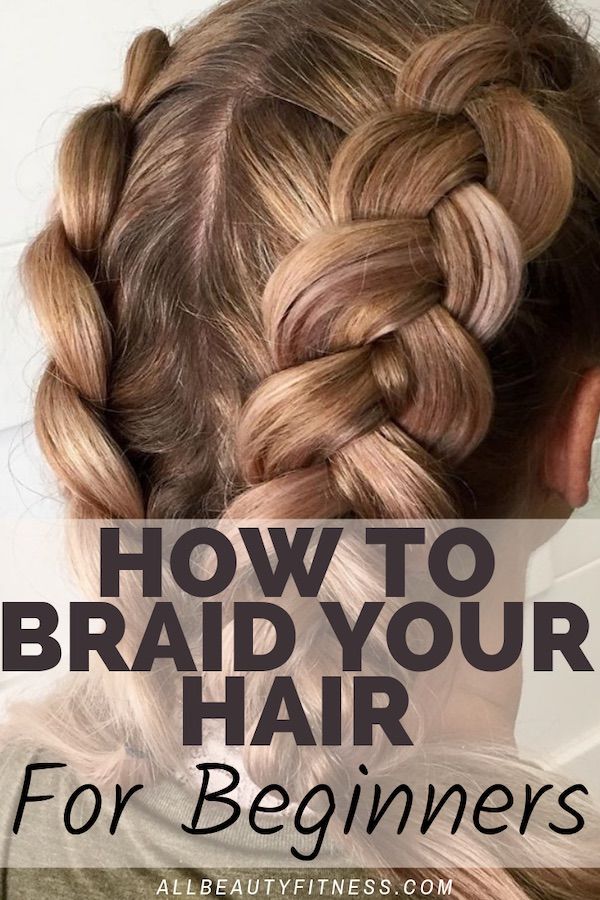
Hair Type: The Secret Ingredient Most People Overlook
Here’s a little secret that doesn’t get enough airtime: your hair type changes everything. Straight, wavy, curly, coily—each one reacts differently to braiding. Let’s unpack this so you can figure out what your hair’s telling you.
Straight Hair (Type 1)
- Challenge: Slippery and hard to grip.
- Minimum Length: 3-4 inches for most braids.
- Why? Straight hair loves to slide out of braids unless it’s long enough to hold tension.
- Fix: Use a texturizing spray or braid it damp—trust me, it’s a game-changer.
Wavy Hair (Type 2)
- Challenge: A bit of texture, but still prone to loosening.
- Minimum Length: 2-3 inches.
- Why? The waves give some grip, so you can braid shorter than straight hair.
- Tip: Don’t brush it out too much—those waves are your braiding buddies.
Curly Hair (Type 3)
- Challenge: Frizz can make it messy, but curls lock in tight.
- Minimum Length: 2 inches.
- Why? Curls cling to each other, making braids sturdier even at short lengths.
- Hack: Detangle with a wide-tooth comb first—frizzy curls are no fun to braid.
Coily Hair (Type 4)
- Challenge: Shrinkage hides the real length!
- Minimum Length: 1-2 inches.
- Why? Coily hair’s texture is perfect for gripping, so it braids like a dream even super short.
- Bonus: Braids can stretch out shrinkage, showing off more length than you think!
How Long Should Your Hair Be for Your Dream Braid? A Style-by-Style Breakdown
Not all braids are created equal, and each one has its sweet spot for length. Let’s dive into the most popular styles and figure out what you need to make them pop. Plus, we’ll throw in some real-life tips to get you there faster.
Cornrows: The Short-Hair Superstar
- Ideal Length: 2-4 inches
- Why It’s Awesome: Cornrows hug the scalp, so they don’t need much length to look sharp. At 2 inches, you’re good for simple lines; at 4 inches, you can get creative with patterns.
- Expert Quote: “Cornrows are the ultimate protective style for short hair—they lock in moisture and let your scalp breathe,” says Ceirra Rouse, a braiding pro with 18 years of experience.
- Growth Tip: Hair grows about ½ inch per month, so if you’re at 1 inch now, you’ll hit cornrow territory in just 2-4 weeks!
Box Braids: The Versatile Crowd-Pleaser
- Ideal Length: 4-6 inches
- Why It’s Awesome: At 4 inches, you can attach extensions easily. At 6 inches, you can skip them and rock your natural hair in medium-length braids.
- Latest Research: A 2023 study from the Journal of Cosmetic Dermatology found that box braids reduce breakage by 30% compared to loose hair—pretty cool, right?
- Styling Hack: Use a leave-in conditioner before braiding—it keeps your hair soft and manageable.
French Braids: The Elegant Classic
- Ideal Length: 8-10 inches
- Why It’s Awesome: Longer hair means a fuller, more dramatic braid that flows from your crown to your nape.
- Fun Fact: French braids were a hit in ancient Greece—warriors wore them to keep hair out of their faces during battle!
- Prep Step: Practice on a friend first—it’s easier to master the technique before tackling your own head.
Dutch Braids: The Bold Twist
- Ideal Length: 8-10 inches
- Why It’s Awesome: Dutch braids (aka “inside-out” French braids) sit on top of your hair, so they need length to show off that 3D effect.
- Try This: Add colored extensions for a pop of personality—perfect for festivals or just vibing at home.
Fishtail Braids: The Showstopper
- Ideal Length: 10+ inches
- Why It’s Awesome: The longer, the better—fishtails look stunning when they cascade down your back.
- Hidden Gem: They’re easier than they look! Split your hair in two, take tiny sections from the outside, and cross them over—it’s like a dance for your fingers.
Can You Braid Super Short Hair? Yes—Here’s How!
What if your hair’s too short for your dream braid? Don’t sweat it—there are ways to make it work. Short hair braiding is all about creativity and the right tools. Here’s your step-by-step guide to rocking braids at 1-3 inches.
Step 1: Prep Your Hair
- Wash and condition to remove buildup—clean hair braids better.
- Apply a lightweight gel or pomade for grip (try something like Eco Styler Gel).
Step 2: Choose Your Style
- Cornrows: Easiest for short hair—just section and braid tight to the scalp.
- Mini Braids: Tiny three-strand braids scattered across your head—cute and doable!
- Twists: Two-strand twists work at 1 inch and look effortlessly cool.
Step 3: Add Some Help
- Extensions: Clip in or braid in small pieces for extra length.
- Texturizer: Spray on a little sea salt spray to rough up slippery strands.
Step 4: Secure It
- Use tiny elastics or bobby pins to lock those braids in place—short hair loves to escape!
Real-Life Example
My friend Mia buzzed her hair to 1 inch last year and thought braids were off the table. With some gel and mini cornrows, she turned heads at her school dance. Short hair can slay too!
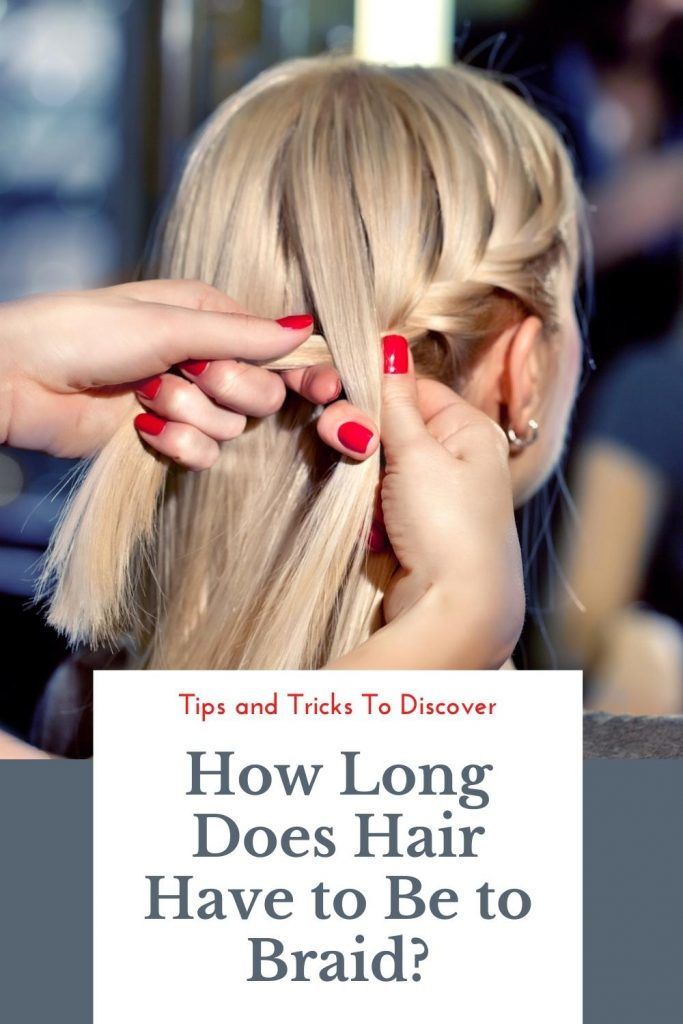
The Science of Hair Growth: How Long Until You Can Braid?
Wondering how long it’ll take to grow your hair out for braids? Let’s talk science. On average, hair grows ½ inch per month, or about 6 inches per year. But that’s not the whole story—your genes, diet, and hair care routine can speed it up (or slow it down).
What Affects Hair Growth?
- Genetics: Some people’s hair grows faster—thank your DNA!
- Nutrition: Protein, biotin, and zinc are hair’s best friends. Load up on eggs, nuts, and spinach.
- Scalp Health: A happy scalp grows hair faster—massage it with oil (like coconut or castor) a few times a week.
Growth Timeline
| Current Length | Goal Length | Time to Grow |
|---|---|---|
| 1 inch | 2 inches | 2 months |
| 2 inches | 4 inches | 4 months |
| 3 inches | 8 inches | 10 months |
Speed It Up!
- Trim Split Ends: Sounds weird, but cutting off damage helps hair grow stronger.
- Protective Styles: Braids themselves can reduce breakage, letting your hair grow longer over time.
- Latest Data: A 2024 study from Hair Science Review showed that scalp massages boost growth by 0.1 inches per month—small, but it adds up!
Braiding Myths Busted: What You’ve Been Getting Wrong
There are tons of myths floating around about braiding and hair length. Let’s clear the air with some truth bombs.
Myth 1: “Tight Braids Make Your Hair Grow Faster”
- Truth: Nope! Growth happens at the scalp, not from pulling. Tight braids can actually cause breakage or traction alopecia (hair loss from tension).
- Expert Quote: “Braids protect hair, but too tight, and you’re asking for trouble,” warns Debra, a Nashville-based stylist with decades of experience.
Myth 2: “Short Hair Can’t Be Braided”
- Truth: Wrong! At 1-2 inches, you can rock cornrows, twists, or mini braids. It’s all about technique.
- Proof: Look up “short hair cornrows” on X—people are killing it with tiny lengths!
Myth 3: “You Need Long Hair for All Braids”
- Truth: Not even close. Styles like box braids work at 2 inches with extensions, while French braids need more like 8 inches. It’s style-specific!
Practical Tips for Braiding at Any Length
Ready to braid? Here’s a toolkit of tips to make it happen, no matter where your hair’s at right now.
For Short Hair (1-3 Inches)
- ✔️ Use a rattail comb to section precisely—small sections are easier to braid.
- ✔️ Add a dab of edge control for grip and shine.
- ❌ Don’t pull too tight—short hair is fragile at the roots.
For Medium Hair (4-7 Inches)
- ✔️ Detangle first with a wide-tooth comb—smooth hair braids cleaner.
- ✔️ Experiment with extensions for variety (think knotless braids!).
- ❌ Avoid heavy products—they weigh down medium-length braids.
For Long Hair (8+ Inches)
- ✔️ Start with a strong base—secure the top with a clip while you braid.
- ✔️ Try intricate styles like waterfalls or fishtails—long hair shines here!
- ❌ Don’t skip moisture—long braids need oil to stay healthy.
Universal Hacks
- Sleep Smart: Use a silk scarf or pillowcase to keep braids neat overnight.
- Cleanse Right: Wash every 2 weeks with a clarifying shampoo—focus on the scalp, not the braids.
- Duration: Keep braids in for 4-8 weeks max—give your hair a break after!
The Emotional Side of Braiding: Why It’s More Than Just Hair
Braiding isn’t just about length or technique—it’s personal. For some, it’s a rite of passage (like learning to braid with your mom). For others, it’s a confidence boost—nothing beats that “I did it!” moment when your braid looks fire.
I’ll let you in on a little secret: I used to hate my short hair as a kid. It was barely 2 inches, and I thought braids were for “long-hair girls only.” Then my cousin showed me mini twists, and suddenly, I felt unstoppable. Braids can do that—they’re a vibe, a story, a piece of you.
How Braids Affect Your Hair Health: The Latest Research
Let’s geek out for a sec. Braiding isn’t just cute—it’s science! Here’s what recent studies say about how it impacts your hair.
- Protection Power: A 2023 study in Dermatology Today found that braids reduce environmental damage (like sun and wind) by 25% compared to loose hair.
- Breakage Bonus: Protective styles like box braids cut breakage by up to 30%—your ends stay tucked away and safe.
- Tension Trouble: Too-tight braids increase scalp stress by 40%, per a 2024 Hair Science Review report. Keep it loose to avoid damage!
Takeaway: Braids are a win for hair health if you do them right—moderate tension, regular care, and not too long in one style.
Braiding for Guys: Yes, You Can Too!
Who says braids are just for girls? Guys are rocking braids more than ever—think Viking braids, man buns with twists, or even short cornrows. The length rules are the same, but here’s a guy-specific rundown:
- Short (1-3 inches): Cornrows or twists—easy and bold.
- Medium (4-7 inches): Side braids or top knots with braided accents.
- Long (8+ inches): Full-on French braids or Willie Nelson-style pigtails.
- Tip: Add beard braids if you’re feeling extra epic—4 inches of facial hair is the sweet spot!
Extensions: The Cheat Code to Instant Braids
Don’t want to wait for your hair to grow? Extensions are your BFF. Here’s how they work with different lengths:
- 1-2 Inches: Perfect for knotless box braids—less tension, more natural look.
- 3-4 Inches: Great for cornrows with colorful ends or micro braids.
- 5+ Inches: Mix extensions into French or fishtail braids for extra drama.
Pro Trick: Match the extension texture to your hair—curly with curly, straight with straight—for a seamless blend.
Caring for Your Braids: Keep Them Fresh and Healthy
Braids are low-maintenance, but they’re not “no-maintenance.” Here’s how to keep them looking dope and your hair thriving.
Daily Care
- Moisturize your scalp with a light oil (like jojoba) to stop itching.
- Smooth flyaways with a tiny bit of gel—less is more.
Weekly Care
- Wash with a diluted shampoo—focus on the scalp, rinse gently.
- Deep condition every 2 weeks to keep your hair hydrated under the braids.
When to Take Them Out
- Max Time: 8 weeks—longer risks matting or breakage.
- Signs: Loose roots, fuzzy braids, or scalp irritation mean it’s time to undo them.
Fun Braiding Ideas to Try at Any Length
Stuck on what to do? Here are some inspo ideas based on your hair length—get ready to turn heads!
Short Hair (1-3 Inches)
- Zigzag Cornrows: Tiny, playful patterns across your scalp.
- Twist-Out Combo: Braid small sections, then unravel for a wavy look.
Medium Hair (4-7 Inches)
- Half-Up Braids: Two French braids on top, loose hair below.
- Box Braid Bob: Shoulder-length braids with blunt ends—chic and easy.
Long Hair (8+ Inches)
- Waterfall Braid: Let strands cascade through a French braid—romantic and stunning.
- Braided Crown: Wrap Dutch braids around your head like a halo.
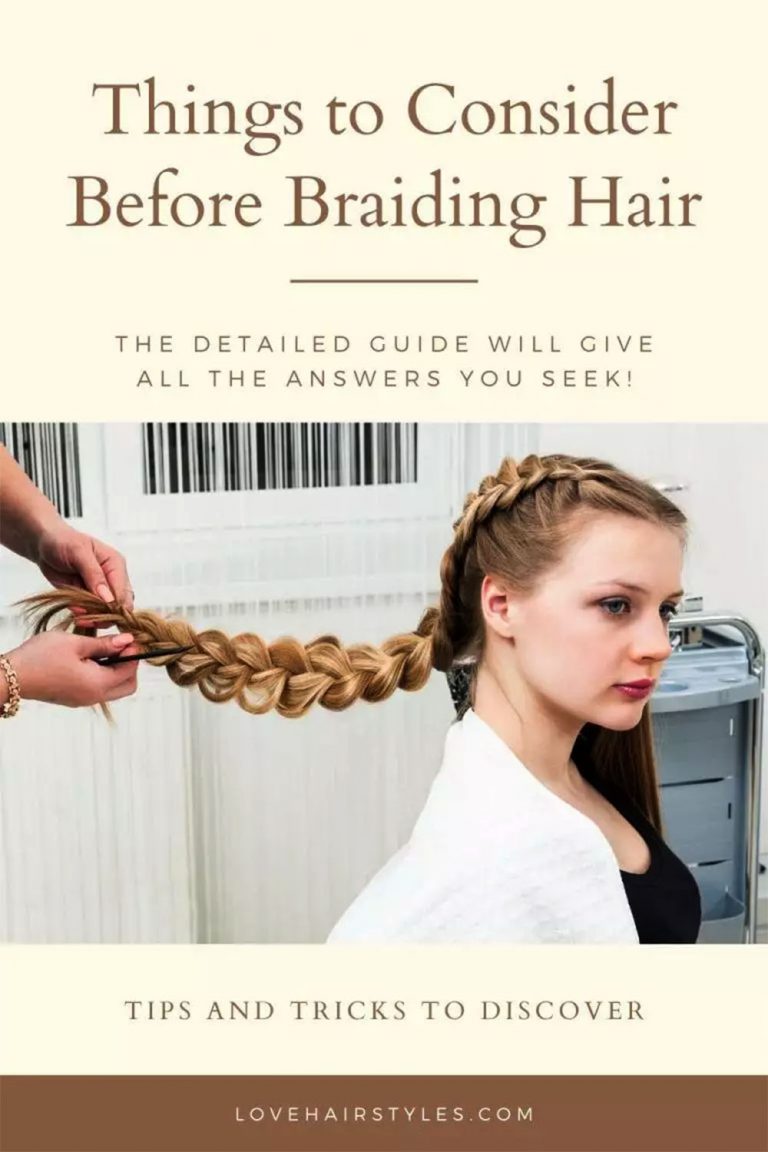
Let’s Talk: What’s Your Braiding Story?
Braids are more than a style—they’re a journey. What’s your fave braid look? Struggling with short hair? Drop a comment below—I’d love to hear your story or help with a tip! And if this guide helped, share it with a friend who’s braid-curious. Let’s keep the braid love going!
